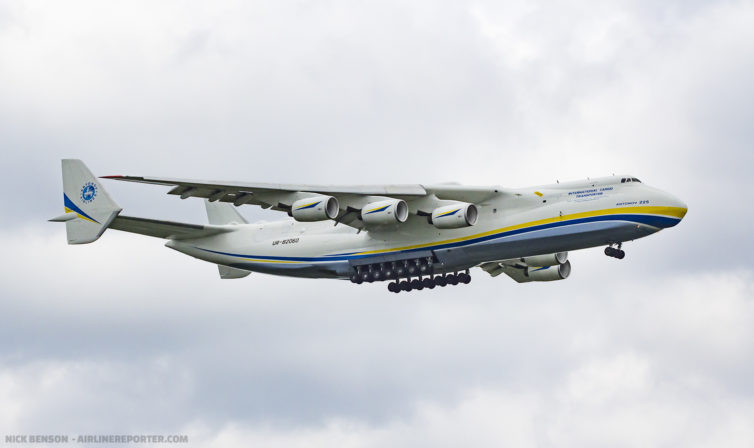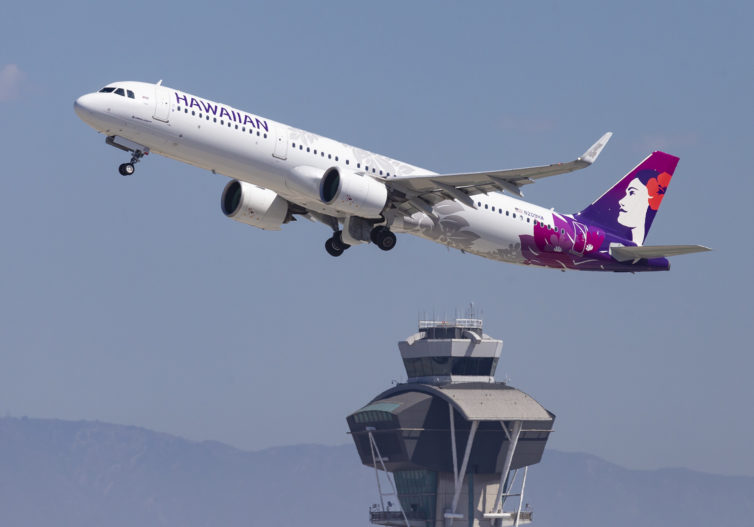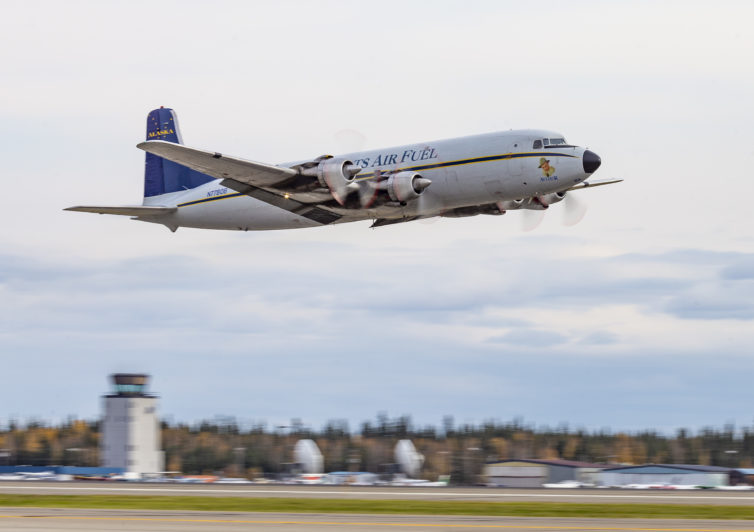
I’ve always thought airplanes were cool, I suppose. I attended a couple of small air shows as a kid, had a turn at the controls in a cousin’s Ercoupe, and knew enough to notice when I got to catch a flight on an RJ85 or DC-10, but it wasn’t anything more than a casual interest. Seeing the world’s largest aircraft changed all of that.
Six years ago my primary hobby was railroad photography, though my new parental status meant I could no longer responsibly spend 10-20 days a month chasing trains around. Somehow I’d gotten looped into the local plane-spotting group on Facebook, and caught wind that the Antonov An-225 would be making a visit to Minneapolis−Saint Paul International Airport (MSP), which was just 15 minutes away. My first plane-spotting trip was in order.
My boys were two and four years old at the time, so we visited a playground under the approach path to MSP’s 12R. We were hooked! We enjoyed the parade of typical early-afternoon arrivals; Delta 717s, MD-80s, 757s, A320s, A330s, and the sole remaining scheduled 747, which came daily from Narita (NRT). Seeing so many examples of impressive engineering arriving from so many different places really captured my imagination; seeing the largest successful aircraft glide by was remarkable. This was entirely pleasant way to pass the time.

For those following the impacts of COVID-19 on American aviation closely, it’s been an exhausting couple of months. Airlines have been hemorrhaging money, arguing for CARES Act exemptions from a fairly-inflexible DOT, and reducing their employment obligations to tens of thousands of employees. The full impact of the crisis on aviation, and the economy at large, still isn’t known.
The airlines have been reacting to the decreased demand for passenger flights by operating fewer flights with fewer aircraft. Being the avgeek I am, I was interested to see the evolution of each airline’s fleet as it reacted to COVID-19 – which types are getting hit hardest? Do airlines have a preference for newer, more efficient equipment, despite decreased fuel costs? There has been some coverage of the overall number of flights getting operated, pre-crisis vs. post-crisis scheduling, but I was interested to see how many aircraft each airline was actually operating.
The charts that follow show the total number of unique aircraft that flew for each airline, by type, each week from 30 December 2018 through 26 April 2020. This includes all flights that were detected, primarily derived by ADS-B reports, to JetTip’s data provider, including ferry, maintenance, cargo, etc. In other words, not all of these flights were necessarily revenue passenger flights – several carriers are doing cargo-only flights with their heavies now, and some flights are being operated to keep up with maintenance requirements.

When you chat about Alaska with aviation enthusiasts, there’s no shortage of things to talk about; perhaps the mind-boggling volume of east-west cargo flowing through ANC, or the the world’s largest floatplane base next door at Lake Hood. Military buffs will know about the goodies at Eielson and Elmendorf, and civil aviation folks will lament the recent demise of Alaska Airline’s combis on the fabled milk run.
What if you’d like to get a little farther off the beaten path? What if you’d like to see dozens of DC-6s in America’s northernmost boneyard? What if you’d like to spot seaplanes operating alongside commercial airliners? Well, you’d need to visit Fairbanks, of course! If you can’t make it up yourself, follow along as I share my recent journey.


